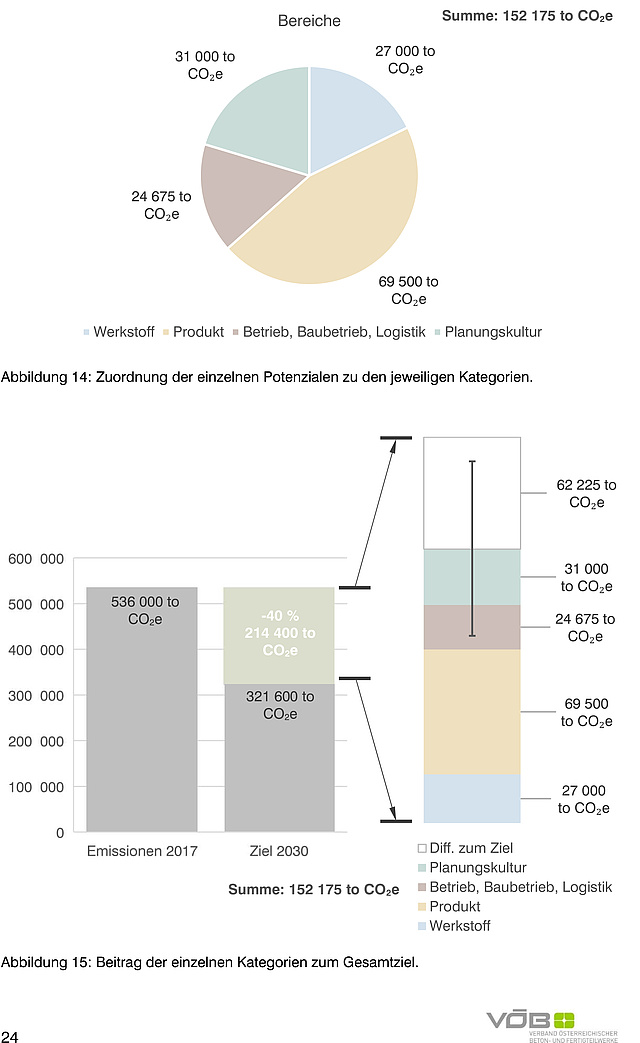Climate Targets 2030: Minus 40% CO2 for Precast Concrete Products
The Institute of Structural Design at Graz University of Technology was commissioned by the Austrian Concrete and Prefabrication Plants Association (VÖB) to conduct an assessment of the potential of reducing emissions for precast concrete products. Within the framework of this cooperation, ITE contributed its expertise which it has obtained over the previous years to the topic of "lightweight construction with concrete" to the final report.
In 2017, about 536,000 tons of CO2 could be attributed to the precast concrete industry sector. At the same time, about 3.7 million tons of precast concrete products was sold. The overall potential saving was quantified at 40% fewer emissions by 2030, which corresponds to a saving of 214 400 tonnes of CO2. The study shows numerous potentials for possible savings, their effects and also the obstacles. The potentials are divided into four categories: material, product, operation/construction/logistics and planning culture. With the factors analysed, an average of about 152,000 tons of CO2 could be saved, which corresponds to about 70% of the volume by 2030. When considering these CO2 savings, the greatest potential is shown in the product category with 46%. In each of the other three categories a similar reduction is possible of around 16-20%.
The entire study can be obtained from VÖB.

